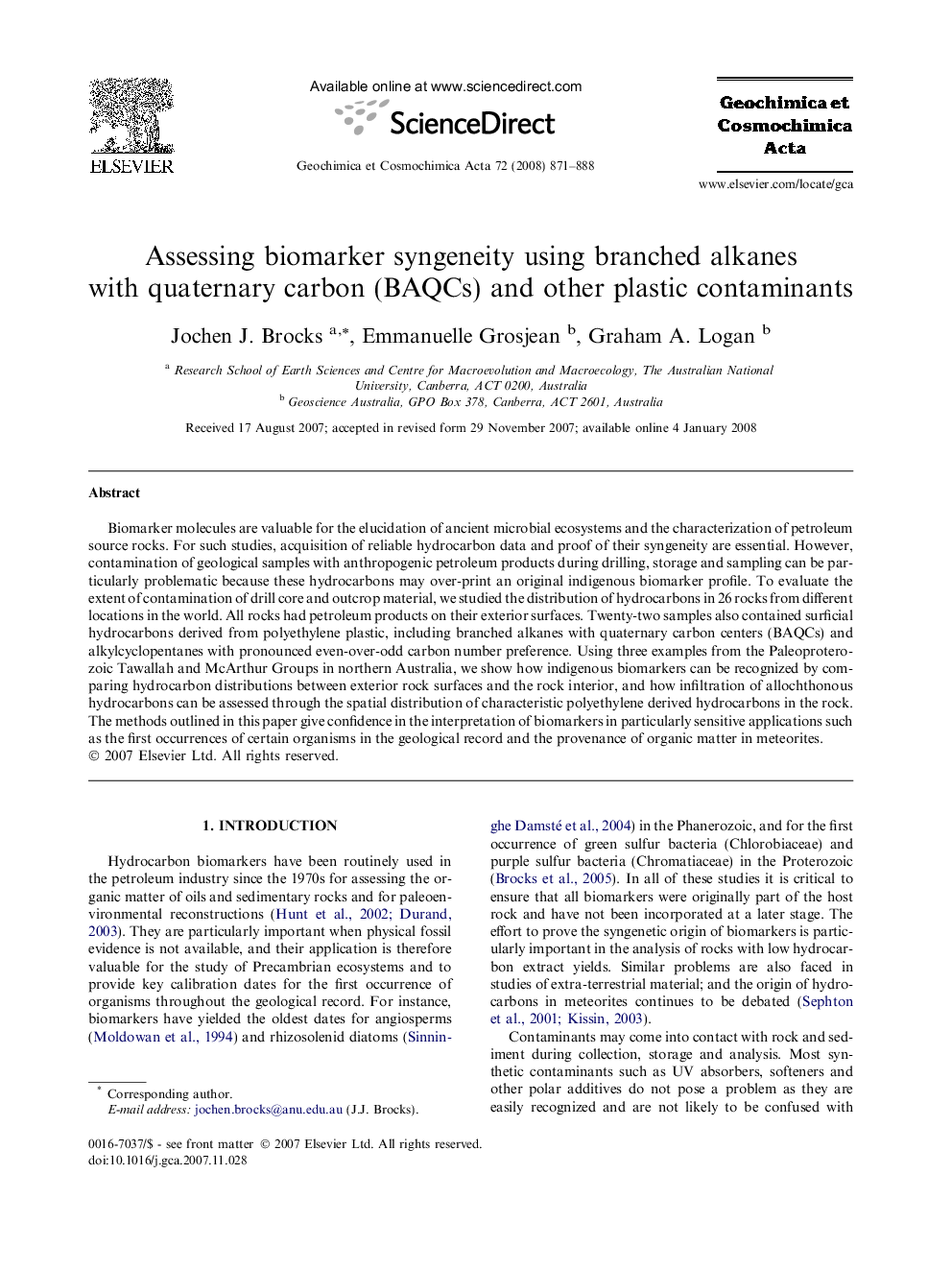| Article ID | Journal | Published Year | Pages | File Type |
|---|---|---|---|---|
| 4705189 | Geochimica et Cosmochimica Acta | 2008 | 18 Pages |
Biomarker molecules are valuable for the elucidation of ancient microbial ecosystems and the characterization of petroleum source rocks. For such studies, acquisition of reliable hydrocarbon data and proof of their syngeneity are essential. However, contamination of geological samples with anthropogenic petroleum products during drilling, storage and sampling can be particularly problematic because these hydrocarbons may over-print an original indigenous biomarker profile. To evaluate the extent of contamination of drill core and outcrop material, we studied the distribution of hydrocarbons in 26 rocks from different locations in the world. All rocks had petroleum products on their exterior surfaces. Twenty-two samples also contained surficial hydrocarbons derived from polyethylene plastic, including branched alkanes with quaternary carbon centers (BAQCs) and alkylcyclopentanes with pronounced even-over-odd carbon number preference. Using three examples from the Paleoproterozoic Tawallah and McArthur Groups in northern Australia, we show how indigenous biomarkers can be recognized by comparing hydrocarbon distributions between exterior rock surfaces and the rock interior, and how infiltration of allochthonous hydrocarbons can be assessed through the spatial distribution of characteristic polyethylene derived hydrocarbons in the rock. The methods outlined in this paper give confidence in the interpretation of biomarkers in particularly sensitive applications such as the first occurrences of certain organisms in the geological record and the provenance of organic matter in meteorites.
